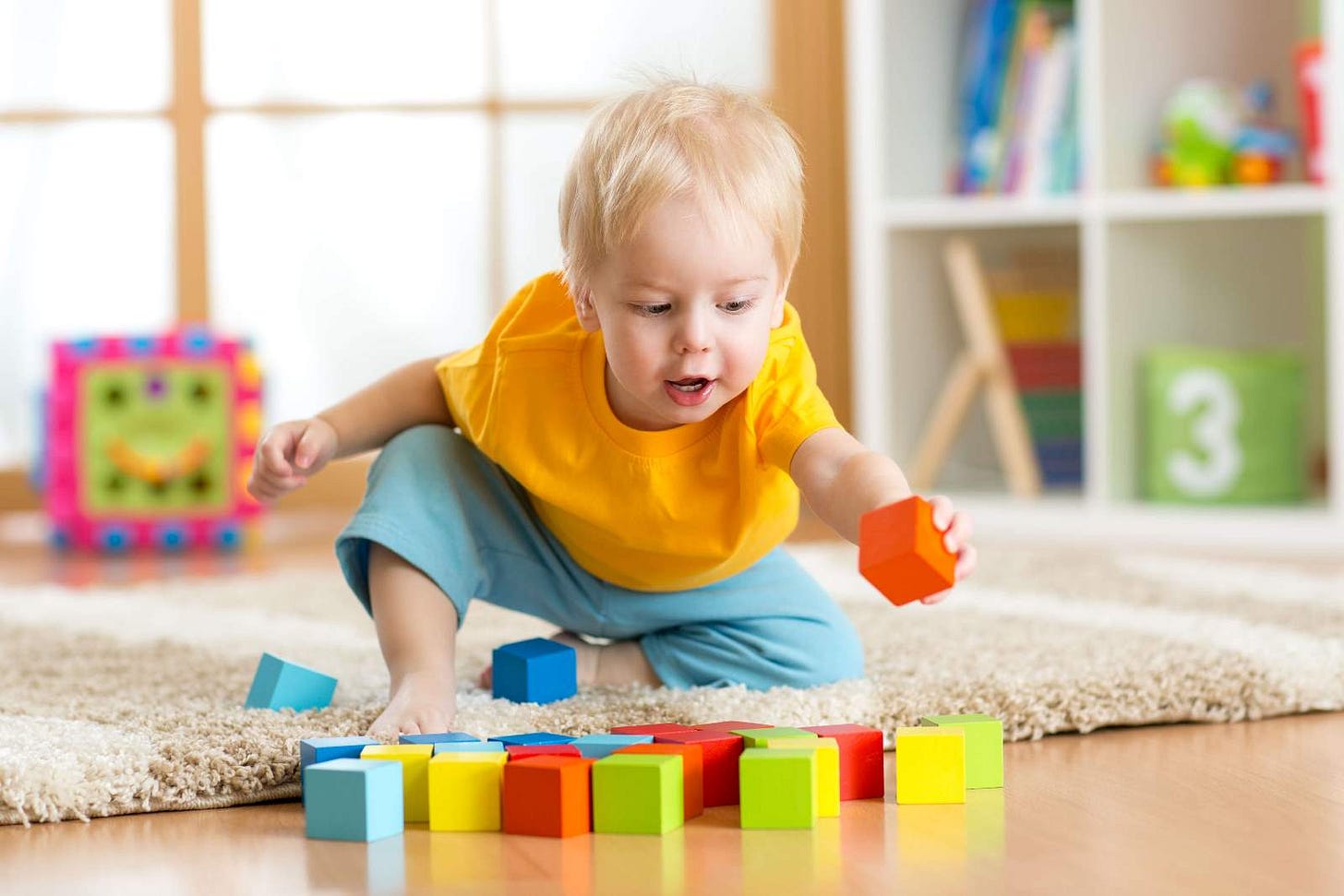Techniques To Help Your Young Toddler Learn The Names Of Objects.
Daily communicating with your toddler is a major part for your child to learn the name of things. They are observing, listening and sucking up everything like a sponge when you talk with them.
1. Label Objects In Fun Ways
Make picture flashcards
These forms of flashcards have both the picture and the name of the object. Your toddler can learn the correct name and appearance of an object, and then try to find it around the home or in books. These flashcards can be homemade or store-bought and can be reused several times throughout the week.
DIY flashcards
Cut pictures of objects out of a magazine. Start with four images and then increase the number over time.
Choose colored pictures of things within your child’s everyday environments.
Paste each image onto either cardboard or stiff paper.
Cut the cardboard into medium-sized cards and place mactac over them.
Take turns choosing the cards and labeling the objects. Do create conversations and questions about the images on the cards with your child.
Make a DIY scrapbook
Create a scrapbook using an assortment of color images from magazines. These pictures can be of different themes, such as vehicles, dinosaurs, safari animals, fruits, or sports. Stick to using more realistic-looking images of things and add their names.
Scrapbook title ideas
Animals that live on a farm.
Animals that live in the water
Animals that live in a zoo.
Pieces of winter clothing.
Objects that start with the letter A.
Foods that are the color Red.
Diverse types of sports.
Play the “What’s That game”?
This game is straightforward and can be played anywhere with your child. Find different interesting things and point to them while asking your child, “What’s that?”. Give them time to look and answer. If your child doesn’t know the name of the object, provide a clue.
2. Regularly Read Picture Books
Reading books daily with your child is a great way to help them learn the names of objects, understand their uses, and pronounce names correctly. A study found that ‘‘early expressive language development was facilitated by joint reading strategies that engaged, supported, and promoted children’s active participation in the book reading opportunities’ (Trivette et al., 2010, p.3).
When choosing books, look for these things
Bold, realistic pictures.
Single correct names for objects.
Bold single text.
Colors, colors, and colors.
Images of everyday items found in the home.
Accurate images using the objects correctly.
Textured images of objects that your child can feel.
Easy descriptive words about the objects.
Lots of repetition and easy rhymes.
3. Regularly Sing Rhymes And Songs
Singing is a delightful and easy way for children to learn new words and hear different sounds. A big part of singing is hearing tones and rhythms, which is also needed in saying words. 2 Toddlers like to make songs from things they are doing and things they see. They then invented and re-sing songs that they heard (Welch, 2019).
Singing points to remember
Sing songs slowly.
Include little pauses in songs for your child to fill in the blanks.
Sing songs that have movement, rhymes, beats, and repetitive actions.
Start with singing well-known songs.
Pair songs with daily routines and transitions.'
Use songs to help set the energy and mood for your child.
Sometimes sing songs and sometimes play music.
Play music within the home
Playing music in the background while your child plays can help them stay calm and focused. Music is a great tool to help keep your child's brain engaged, reduce their stress levels, and support their cognitive health. For example, playing soft music while your child is involved in their play can help alert memory and thinking recognition.
4. Repete Back Conversations
Mirror your child's words
While talking with your child, repeat back words they say and find educational ways to rephrase what they are saying so that your child learns a few new words. Answering in short sentences can also be a good idea. When your child says new names of objects or new sounds, copy them back to your child. When imitating your child’s sounds and words, do it respectfully and clearly.
Always Encourage Word Usage
If your toddler says “Wawa”.
‘‘Do you want some water?”
‘‘Is it water you want?’’
‘‘Are you asking for water? Ok, one water coming up’’.
If your toddler is pointing to things
‘‘I cannot understand if you do not ask’’.
“Please use your words”.
‘‘Please tell me what you want or need”.
‘‘Are you asking for something to drink? Milk or water?”
‘‘What would you like?’’.
“See, mommy is using her words, please use yours”.
5. Show Your Child That They Count
Give your child enough thinking time
Give your child time to process information, think about things, and gather their thoughts when talking with them, asking them questions, or stating statements to them. Your child needs time to:
Think about what is being said.
Collect their thoughts.
Connect objects to their names.
Listen to the different word sounds.
Put words together and vocalize them.
Trust themselves.
Let their brains analyze things.


